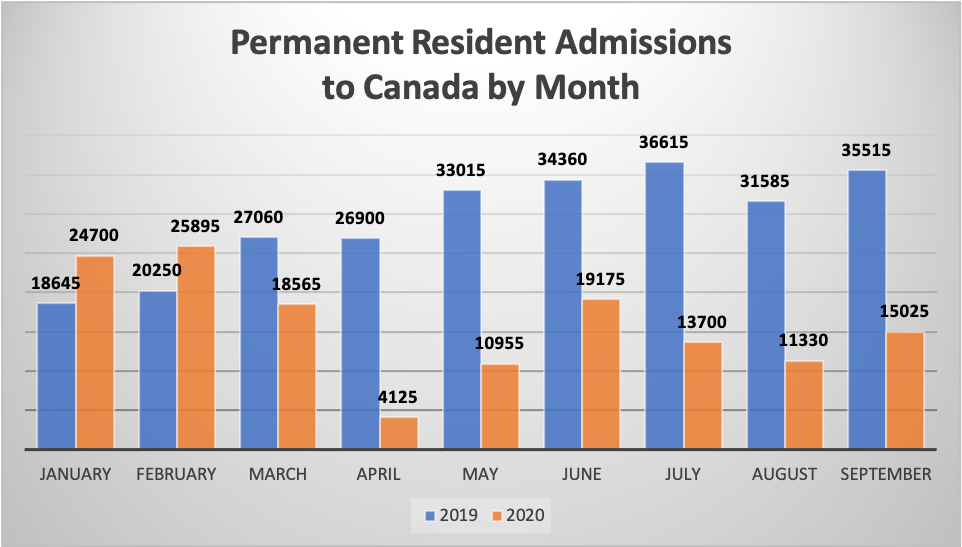
A new portal for confirming permanent residence has been launched by Canada’s federal immigration authority while in-person interviews are suspended due to the coronavirus crisis.
The new system allows immigrants to declare they are in Canada, confirm their address and submit pictures for their PR card.
It also gives candidates access to their proof of permanent residence status, an important document for beginning life in Canada while the PR card is processed.
The portal, which is separate from a candidate’s secure account with Immigration, Refugees and Citizenship Canada (IRCC), is only accessible once an application has been approved.
Read More
Canada Is No 1 Country People Most Want To Move To, Survey Says
Canada’s International Travel Restrictions Extended into 2021
How Canada Plans to Use Immigration to Spark Coronavirus Economic Recovery
Candidates will receive an invitation from IRCC asking for confirmation that they want to use the portal. An account will then be created by IRCC and a link sent to the candidate.
Once the portal account is activated, candidates can submit a photograph and should receive their PR card within a week, according to IRCC. The picture must meet requirements and be accepted by the online system.
Pictures may be rejected if they are too dark, too much glare, or faces cannot be seen.
Canada Immigration numbers remained low in September, as travel restrictions continued to dramatically impact permanent resident arrivals.
The 15,000 newcomers arriving in September means Canada welcomed just over 40,000 in the third quarter, slightly more than the previous quarter but less than half of the 104,000 arrivals in the same period of 2019.
In the first nine months of 2020, Canada saw 143,465 new permanent residents arrive, compared to 263,945 in 2019.
In a glimmer of recovery, September saw the second-highest number of arrivals for a complete month since COVID-19 took a grip in Canada midway through March.
New ‘arrivals’ can either be candidates already in Canada transitioning from a temporary status or those from overseas covered by an exemption to travel restrictions.
Canada recently extended international travel restrictions in place due to coronavirus until January 21, 2021.
The extension means restrictions will have been in place for 10 months as countries all over the world, including Canada, battle a second wave of the COVID-19 pandemic.
The extension to January 21 bring the date into line with the rolling monthly closure of the Canada-U.S. border, which currently expires on December 21, 2020, but is expected to be extended.
Citizens and permanent residents, plus their immediate and extended family members, are exempt from travel restrictions.
Canada currently has exemptions in place for the following people, provided they are travelling for a non-discretionary reason.
- Seasonal agricultural workers, fish/seafood workers, caregivers and all other temporary foreign workers.
- International students who held a valid study permit, or had been approved for a study permit, when the travel restrictions took effect on March 18, 2020. More international students will be allowed to travel from October 20 under a new exemption.
- Permanent resident applicants who had been approved for permanent residence before the travel restrictions were announced on March 18, 2020, but who had not yet travelled to Canada.
- Immediate family members of Canadian citizens and permanent residents are also exempt if entering to be with an immediate family member for at least 15 days.
- Extended family members of citizens and permanent residents, plus foreign nationals travelling on compassionate grounds.
Anyone entering Canada is required to quarantine for 14 days on arrival in Canada and provide border officers with a viable quarantine plan.
Canada Immigration numbers remained low in September, as travel restrictions continued to dramatically impact permanent resident arrivals.
The 15,000 newcomers arriving in September means Canada welcomed just over 40,000 in the third quarter, slightly more than the previous quarter but less than half of the 104,000 arrivals in the same period of 2019.
In the first nine months of 2020, Canada saw 143,465 new permanent residents arrive, compared to 263,945 in 2019.
In a glimmer of recovery, September saw the second-highest number of arrivals for a complete month since COVID-19 took a grip in Canada midway through March.
New ‘arrivals’ can either be candidates already in Canada transitioning from a temporary status or those from overseas covered by an exemption to travel restrictions.
Despite the current restrictions and the impact they are having, Ottawa recently announced its plan to significantly increase immigration from 2021 to kickstart the economic recovery from the pandemic.
Immigration Minister Marco Mendicino told parliament at the end of October that immigration levels would increase to more than 400,000 in 2021, and further over the next two years.


